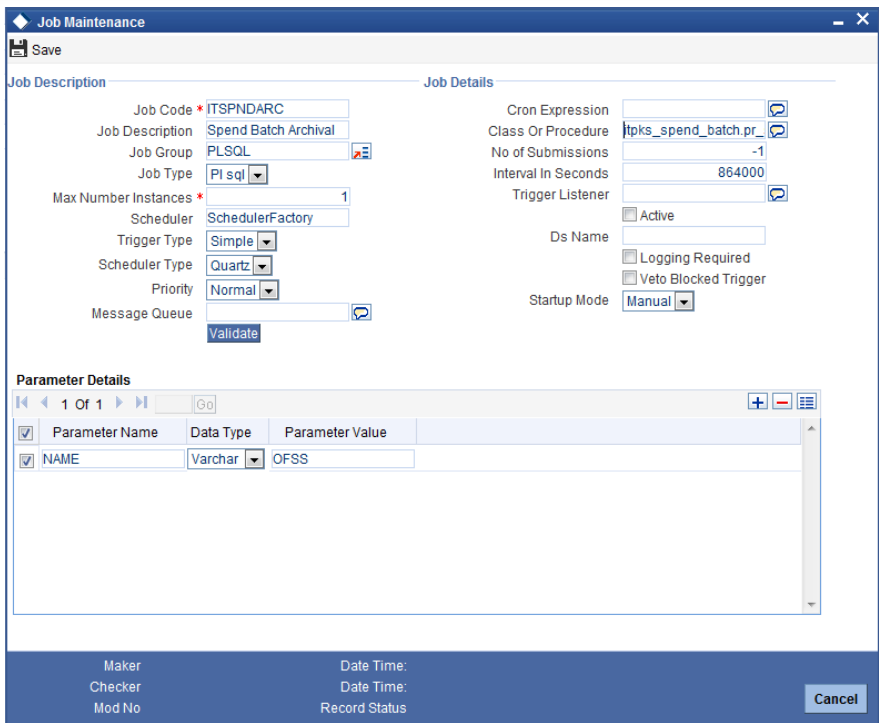1.2 Procedure
This topic explains systematic instructions to create a PLSQL job.
- On Homescreen, type STDJOBMT in the text box, and click Next.The Job Maintenance screen displays.
- On the Job Maintenance screen, specify the fields.For information on fields and their description, refer to installation documents.
A PLSQL job can be Stateful Job or Stateless Job.
The following table describes the PLSQL jobs -The class defined in the class field has to be provided with a fully qualified name.Table 1-1 PLSQL Jobs
PLSQL Job Description Stateful Job If the job is configured to be Stateful then missed instances will be queued up so that the scheduler would start executing once the long-running job ends. It means, there will be no parallel execution of the procedure. To make an executing class Stateful, add two annotations to the job class. - @PersistJobDataAfterExecution
- @DisallowConcurrentExecution
Stateless Job If the job is configured as Stateless, threads can be run in parallel and can execute the same procedure. If the job is configured as Stateless, the value of the field Max Number Instances will denote the number of threads that can be executed in parallel. If the job is configured as stateful, then the above value will denote the number of missed instances that will be queued up so that the quartz scheduler would start executing them once a long-running job ends. This field specifies the number of such job instances that need to be queued up.
Note:
- For every PLSQL job, the executing class is FCPLSQLJobInvoker.java, which is configured as stateless.
- Job params can be added to a particular PLSQL job in this screen as shown above, which are passed to the procedure maintained.
For example,Suppose we have created a new ITSPNDARC PLSQL job for Spend Batch Archival. Here it is a PLSQL job, where the procedure to be executed is itpks_spend_batch.pr_spend_archival.
Parent topic: Create Scheduler PLSQL JOB
